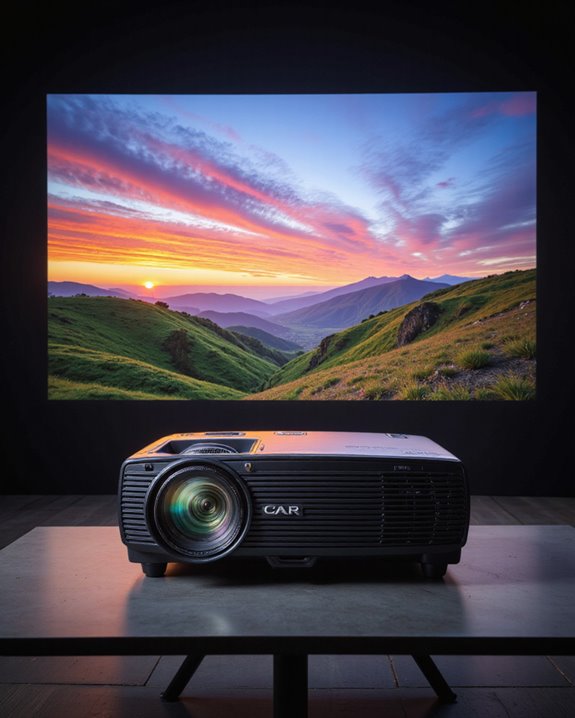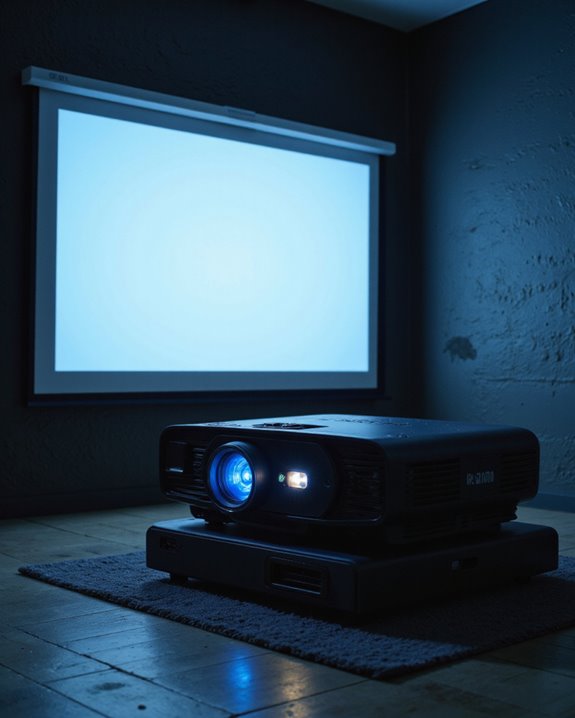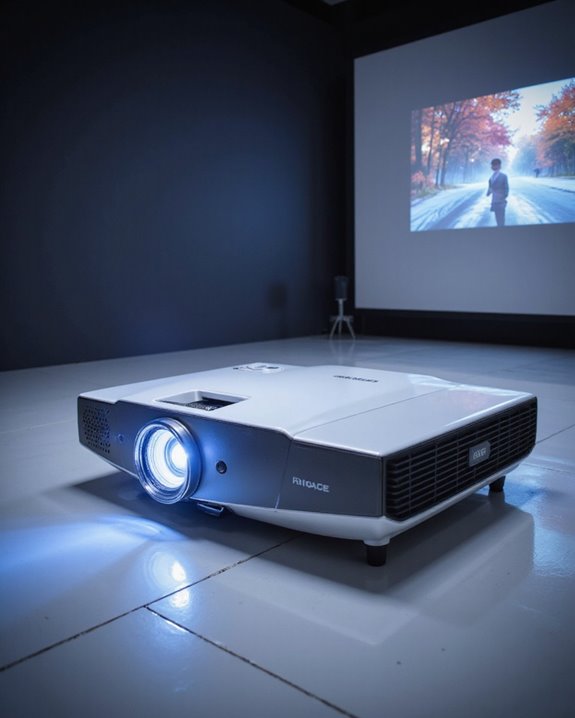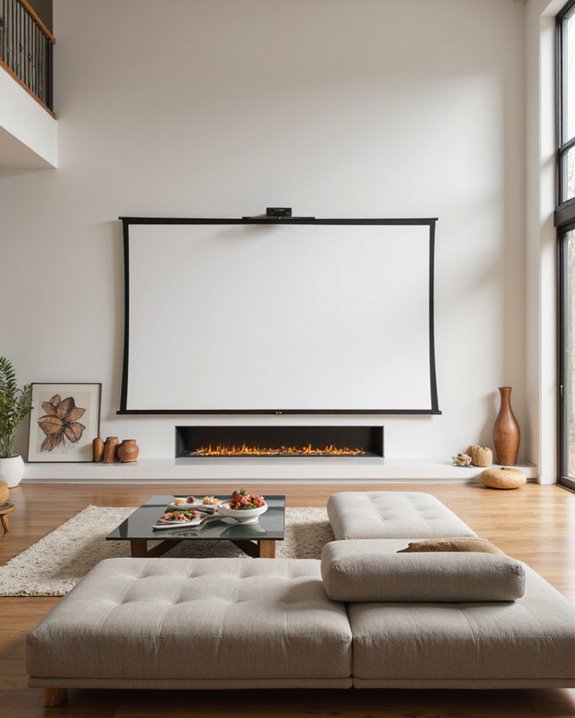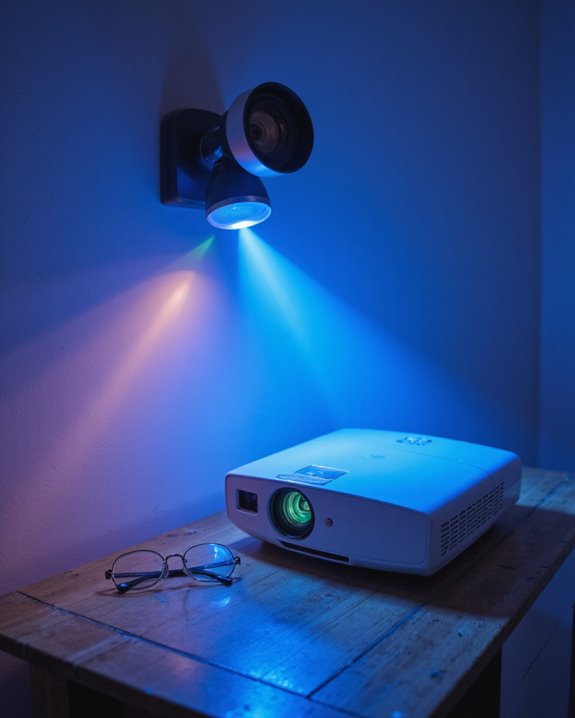Yes, many modern projectors support HDR, or High Dynamic Range, a technology that expands brightness and color range for deeper blacks, brighter highlights, and richer colors. HDR in projectors improves image quality by enhancing contrast and vividness, though projectors typically have lower peak brightness than TVs. Factors like proper calibration, color gamut standards, and ambient lighting control are important for the best experience. Differences in hardware mean projectors face unique challenges and innovations—more details follow on optimizing HDR performance.
Key Takeaways
- Many modern projectors support HDR formats like HDR10, expanding brightness and color range for more vivid and realistic images.
- Projectors can display HDR content, but their lower peak brightness and contrast mean HDR effects are less dramatic than on TVs.
- Proper calibration and minimizing ambient light are crucial to maximizing HDR performance and image quality on projectors.
- Technological advances, such as laser light sources and dynamic tone mapping, are improving HDR capabilities in newer projector models.
- While projectors support wide color gamuts and multiple HDR standards, their HDR performance still lags behind that of high-end televisions.
Understanding HDR: What It Means for Projectors
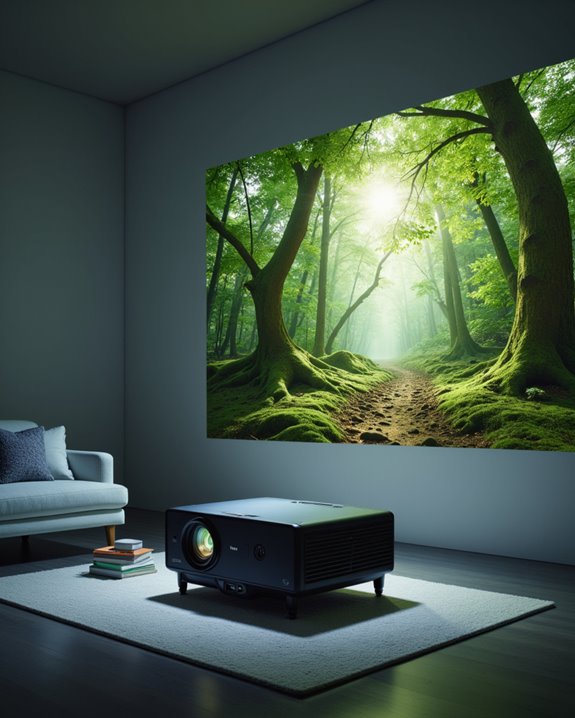
What exactly does HDR mean for projectors? HDR, or High Dynamic Range, is a display technology that allows projectors to show a wider range of brightness and colors than standard projectors. This results in deeper blacks, brighter whites, and richer colors, directly benefiting from advanced HDR color grading. In projectors, HDR capability depends heavily on projector lens quality and precise color calibration. Additionally, modern HDR projectors leverage high brightness levels to fully realize HDR content’s potential without washing out details in bright scenes.
Key aspects include:
- Enhanced contrast ratio, which improves image depth
- Wider color palette, showing more lifelike colors
- Technologies such as Dynamic Iris, which adjust light intensity for accurate highlights and shadow detail
Projectors with HDR support formats like HDR10 and sometimes HDR10+, but may not include all advanced formats. Effective HDR projection relies on both the display’s hardware and its ability to reproduce subtle gradations in light and color.
How HDR Enhances Image Quality in Projectors
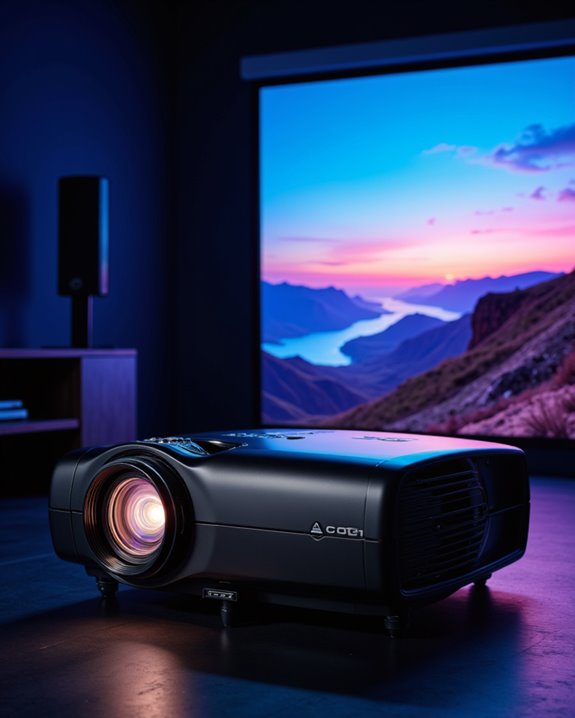
With High Dynamic Range (HDR), projectors can deliver a noticeable upgrade in image quality compared to older Standard Dynamic Range (SDR) models. HDR technology expands the color gamut, or range of colors, allowing projectors to reproduce images with greater color accuracy and enhanced saturation. This results in more lifelike visuals. Brightness control is another key benefit, as HDR enables projectors to achieve higher peak brightness levels without losing detail in the highlights or shadows. Important features include:
- Tone mapping: Balances highlight details and overall brightness for superior pictures.
- Dynamic HDR enhancers: Adjust brightness and color in real time.
- Support for multiple HDR formats (HDR10, Dolby Vision, others).
These improvements make HDR projectors better suited for diverse environments, particularly where ambient light varies, maintaining vivid and clear images.
Key Differences Between HDR on TVs and Projectors
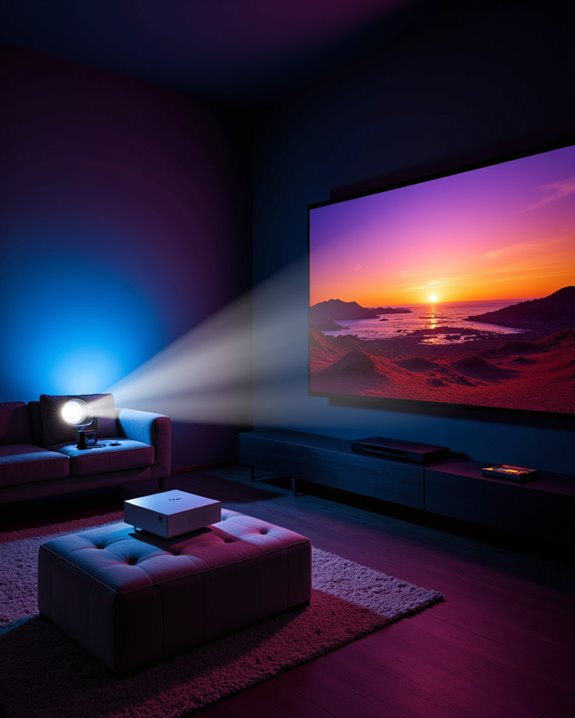
A primary distinction between High Dynamic Range (HDR) on TVs and projectors lies in their ability to deliver peak brightness and contrast. HDR peak brightness refers to the maximum level of light a display can produce. TVs, especially those using OLED technology, reach much higher peak brightness levels than projectors. This allows HDR content to appear more vivid and lifelike on TV screens.
Projectors typically have lower HDR peak brightness due to their design and reliance on external surfaces, such as projection screens. As a result, their contrast ratio—the difference between the darkest black and the brightest white—is also generally lower than that of TVs. Key differences include:
- TVs offer higher HDR peak brightness and contrast ratio.
- Projectors require tone mapping to adapt HDR content.
- Ambient light further impacts projector performance.
The Role of Color Gamuts and Standards in HDR Projection
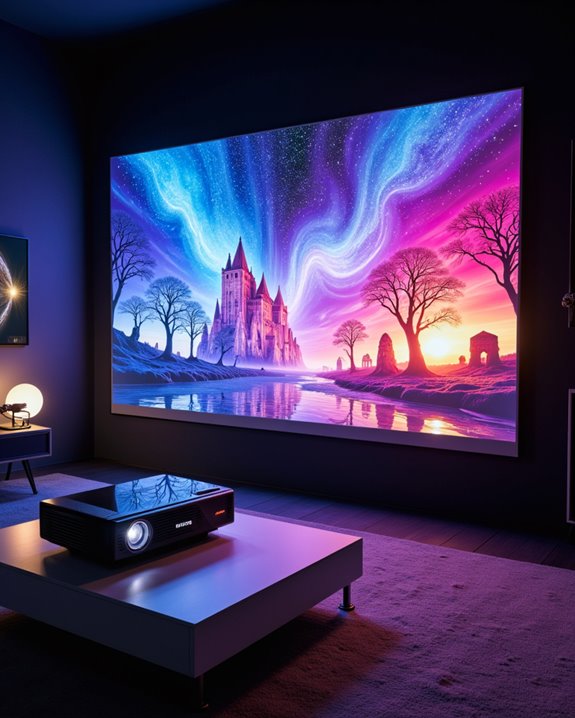
Display brightness and contrast are not the only factors that shape the HDR experience on projectors; color gamut and industry standards play a major role as well. The color gamut refers to the complete range of colors a projector can display. For HDR, standards compatibility with wider gamuts is essential. Key standards include:
- Rec.709: standard for SDR (standard dynamic range) with a limited gamut.
- DCI-P3: the common HDR and cinema standard, offering richer, more saturated colors.
- Rec.2020: the widest color gamut standard, rarely fully covered by projectors.
Most HDR content uses DCI-P3, as Rec.2020 is difficult to achieve. Accurate color gamut mapping guarantees vivid, lifelike images. Projectors supporting wider gamuts and multiple standards provide better versatility and maintain filmmakers’ creative intent. Additionally, advancements in color management technologies enable more precise color reproduction, further enhancing HDR performance on modern projectors.
Challenges of Achieving True HDR Performance in Projectors
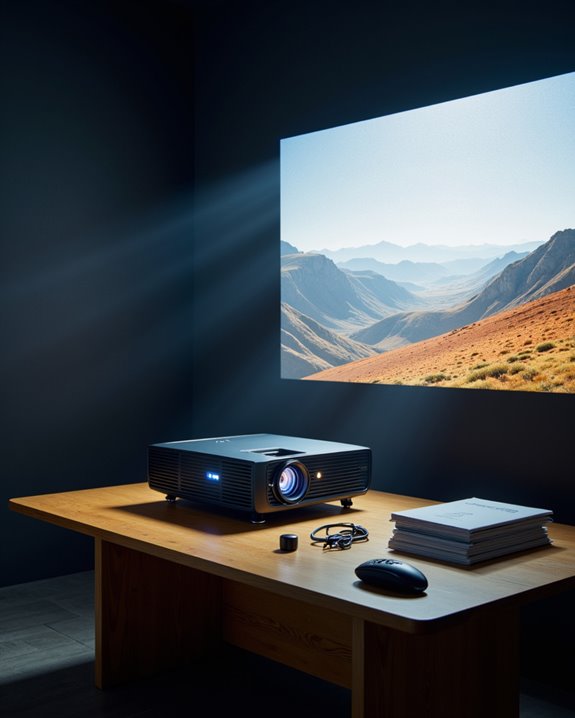
How do projectors measure up to the demands of true HDR, or high dynamic range, performance? Achieving genuine HDR is challenging for projectors due to several physical and technological constraints. First, projectors often cannot reach the high peak brightness—about 1000 nits—required for maximum HDR. Their lower contrast ratios, which define the difference between the darkest blacks and brightest whites, limit the vividness of highlights and shadows. Projectors also lack local dimming, a feature in some TVs that enhances contrast in specific screen areas. Additional hurdles include:
- Lumens output, or the brightness a projector can produce
- Sensitivity to ambient lighting, which can wash out HDR effects
- Color gamut limits, restricting accurate color reproduction
- The projection technology used, which influences HDR rendering and color accuracy
Proper projector calibration and controlled room lighting are essential for maximizing HDR performance, but limitations remain.
Compatibility of HDR Content With Projector Hardware
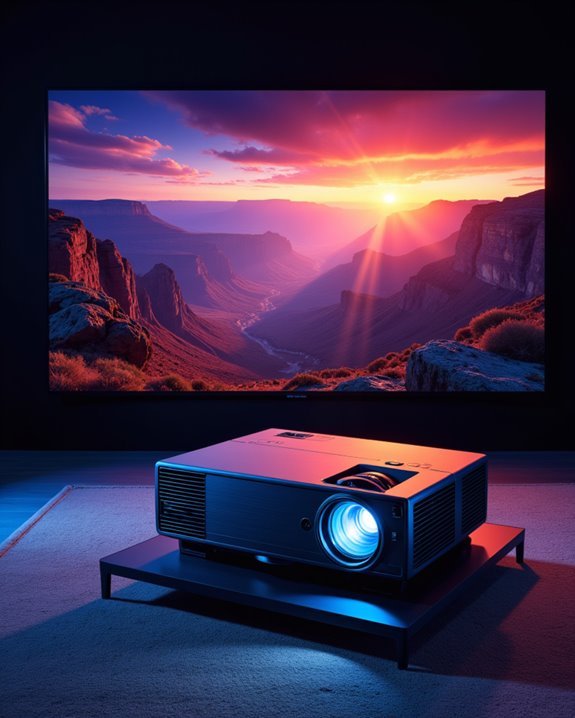
Compatibility between HDR content and projector hardware depends on several important technical factors. Most projectors support the HDR10 format, which requires 10-bit color depth and proper chroma subsampling, such as 4:4:4 or 4:2:2. However, more advanced formats like Dolby Vision and HDR10+ are rarely supported. Projector lumens, a measure of brightness, typically range from 100 to 200 nits—much lower than most HDR TVs. This limitation affects how well HDR content appears, even with correct HDR calibration, which involves adjusting color, brightness, and contrast to match the content’s intent.
Key points for compatibility include:
- Matching the source’s HDR format (HDR10 or HLG)
- Ensuring cable bandwidth supports 4K and HDR
- Aligning color depth and subsampling settings
- Updating firmware for new content standards
Proper setup maximizes HDR impact.
Advances in Projector Technology for Better HDR
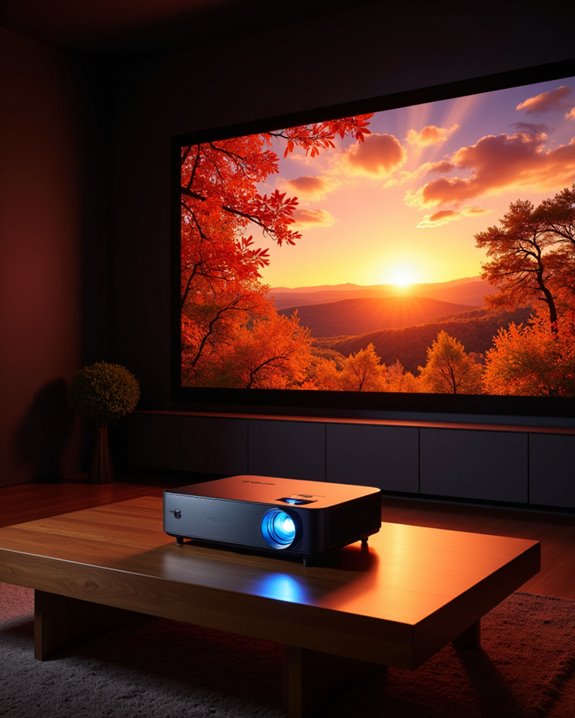
As projector technology evolves, significant advances are improving how well these devices handle High Dynamic Range (HDR)—a feature that expands the range between the darkest and brightest parts of an image. Modern projectors now support HDR10 and HDR10+ standards, enhancing both color and contrast. OLED projectors use individually lit pixels for perfect blacks, which boosts HDR performance. Laser projection systems, like those developed by Barco, deliver vivid color and deep black levels. Advances in projection angles allow placement flexibility without sacrificing HDR image quality, while sound integration ensures audio matches the enhanced visual experience. Ultra-short-throw projectors offer large, sharp images from close distances. Seamless connectivity, AI-powered features, and growing smart home integration further refine user experience, supporting the broader adoption of HDR content.
What to Look for When Choosing an HDR Projector
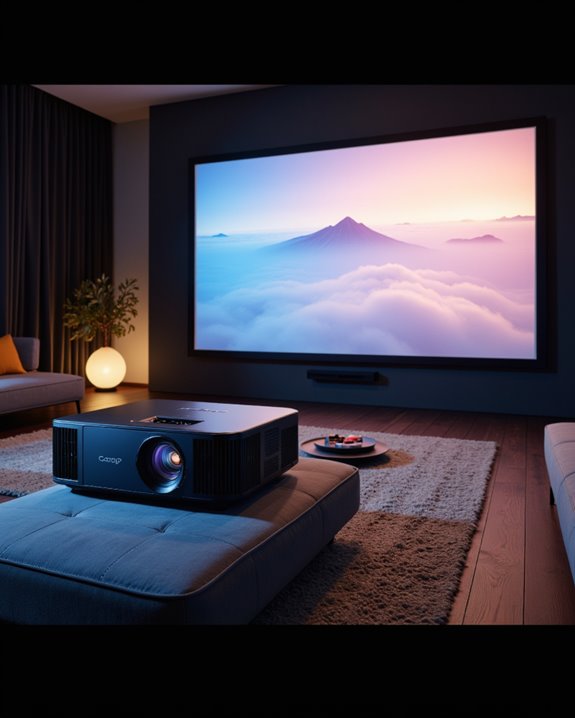
Selecting an HDR projector requires careful attention to several technical specifications that directly impact picture quality. The most critical factors are high brightness—ideally reaching 30 foot-lamberts (fL), or about 100 nits—and a high contrast ratio, which guarantees deeper blacks and brighter highlights. A wide color gamut, or color range, lets the projector display more vivid and accurate colors.
- Look for support of HDR standards such as HDR10, HDR10+, or Dolby Vision.
- Resolution matters; 4K projectors provide sharper images for HDR content.
- Screen calibration is essential to adjust color and brightness settings accurately.
- Carefully control ambient lighting in the viewing area, as excess light can wash out HDR effects.
- Make certain of compatibility with modern HDMI standards and regular software updates for best performance.
Frequently Asked Questions
Can Older Projectors Be Upgraded to Support HDR Through Firmware or Hardware Changes?
Upgrading older projectors to support HDR typically requires more than a firmware upgrade; significant hardware modification is necessary. Such modifications are rarely feasible, often costly, and may void warranties, making the purchase of a new HDR-capable projector preferable.
Does Ambient Room Lighting Affect HDR Projector Performance?
Like sunlight fading a photograph, ambient lighting diminishes a projector’s dynamic range by washing out shadows and reducing contrast. This interference makes it difficult for viewers to appreciate the full depth and vibrancy of HDR content.
Are There Budget-Friendly HDR Projectors Suitable for Casual Home Use?
Budget friendly options for casual home viewing exist, though most projectors under $600 offer limited HDR performance. These models typically prioritize brightness and 1080p resolution, delivering enhanced contrast rather than full HDR, making them suitable for non-critical viewing.
How Do Projector Screens Impact Perceived HDR Quality?
Projector screens affect perceived HDR quality by influencing brightness, contrast, and color accuracy. Screen texture impacts color enhancement and saturation, while reflective properties and material choice help maintain HDR detail, black levels, and consistent color performance across viewing angles.
Is HDR Gaming Possible on Projectors, and Are There Input Lag Concerns?
A gamer using a BenQ TK700STi experiences responsive HDR gaming after careful HDR calibration and ensuring adequate projector brightness. While input lag can be a concern, recent gaming projectors minimize delays, supporting immersive, visually rich HDR gameplay experiences.

